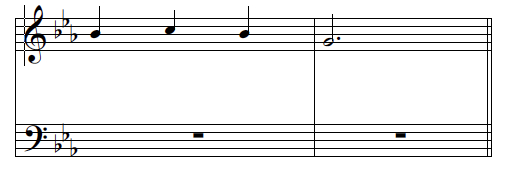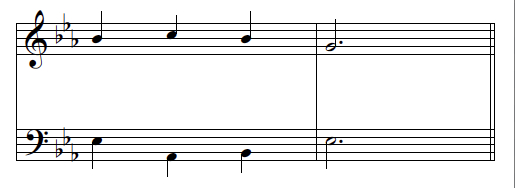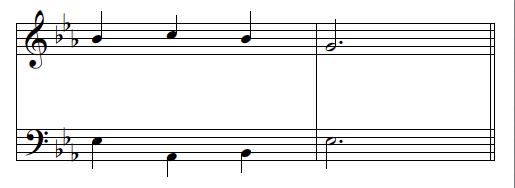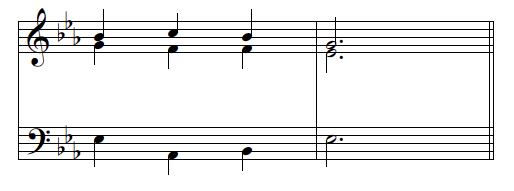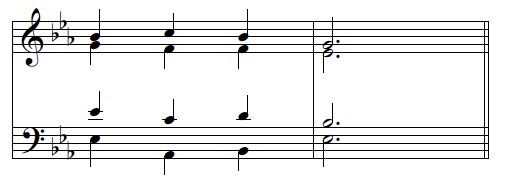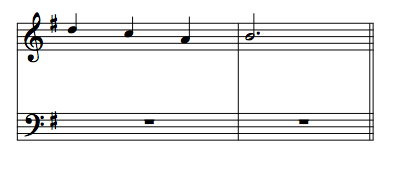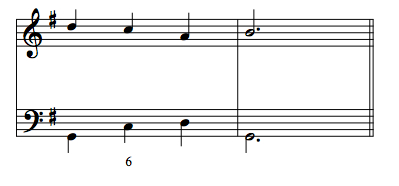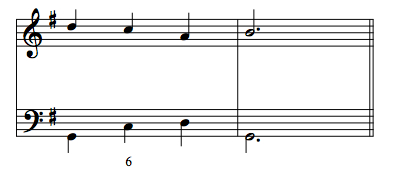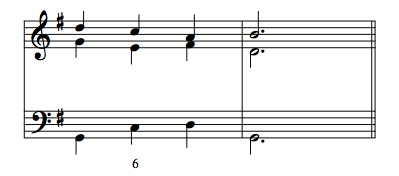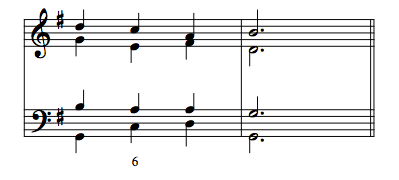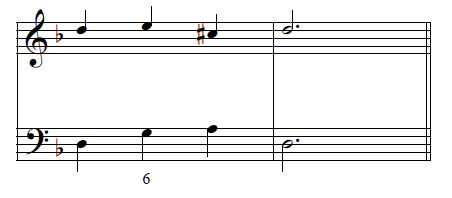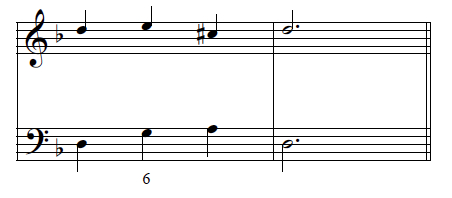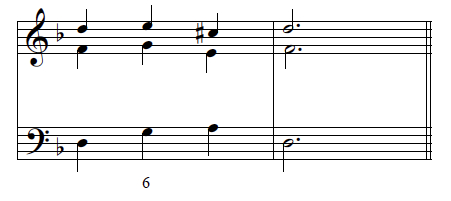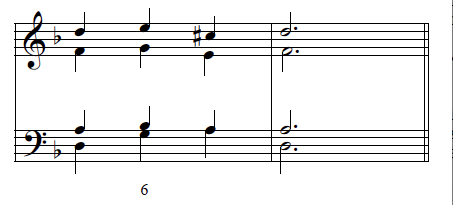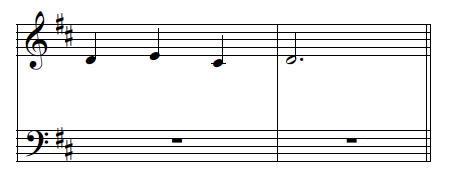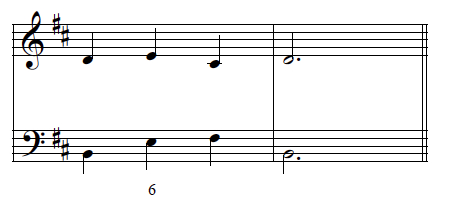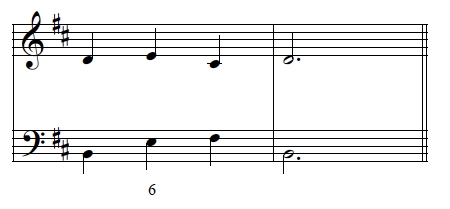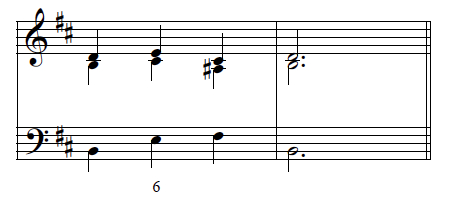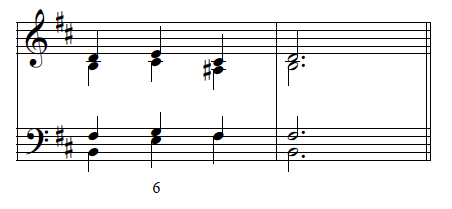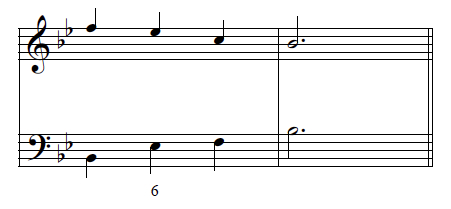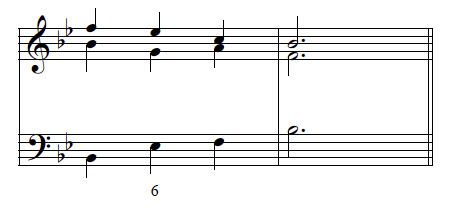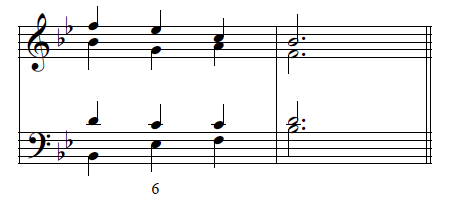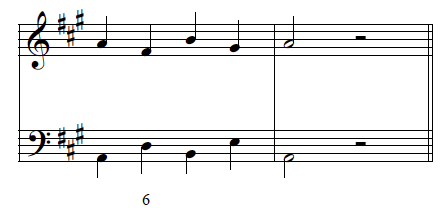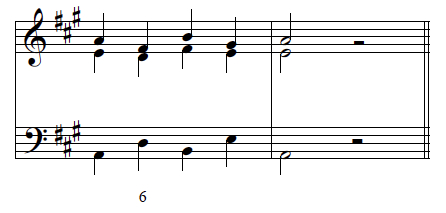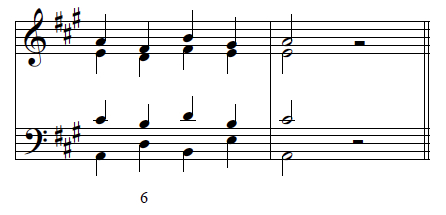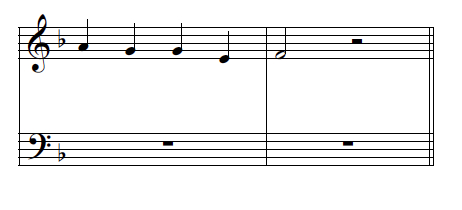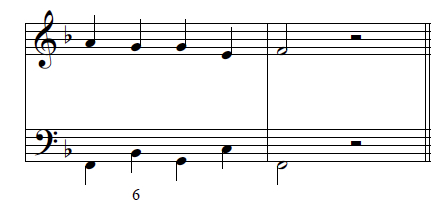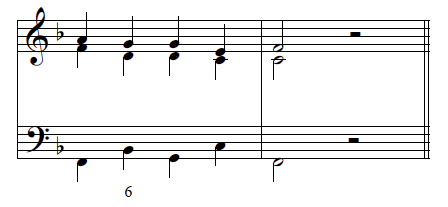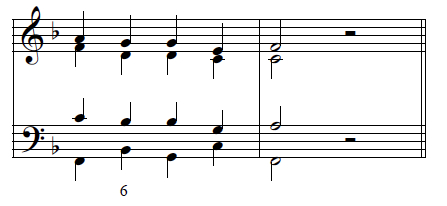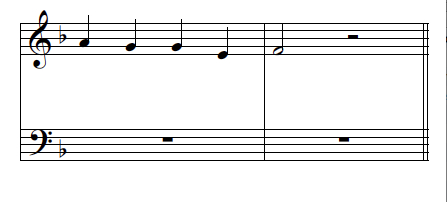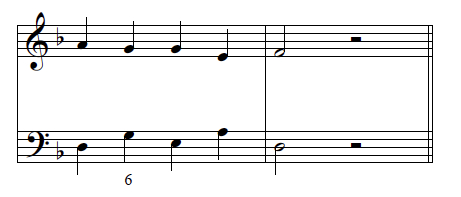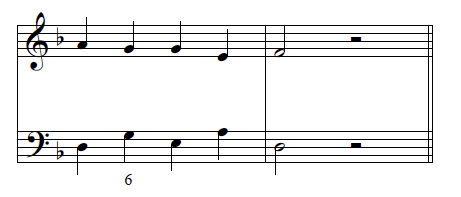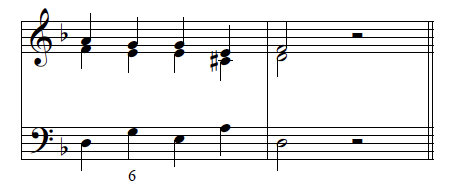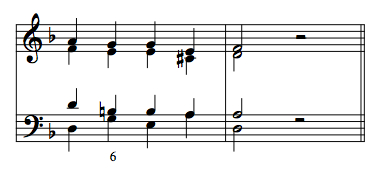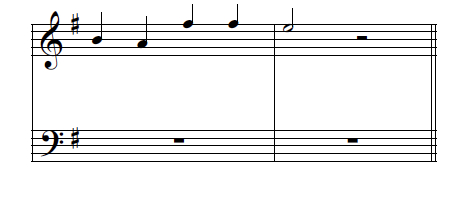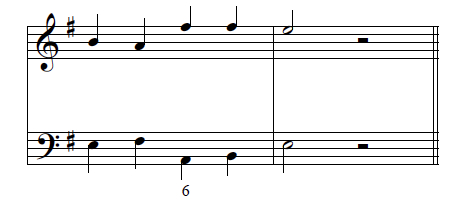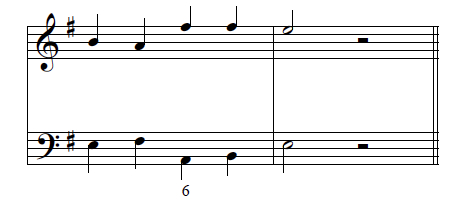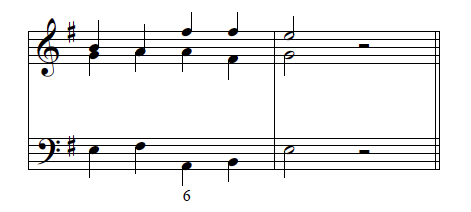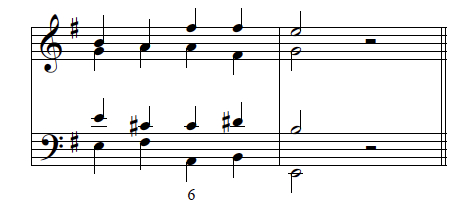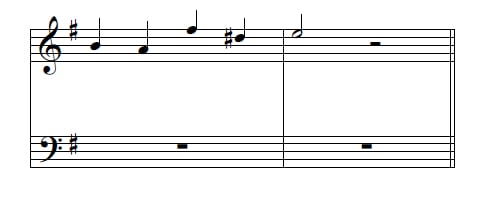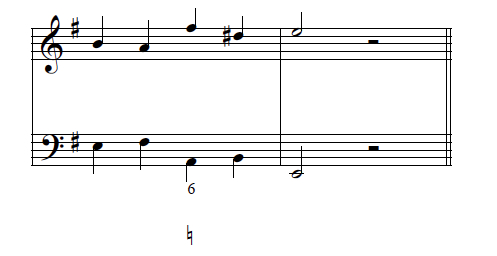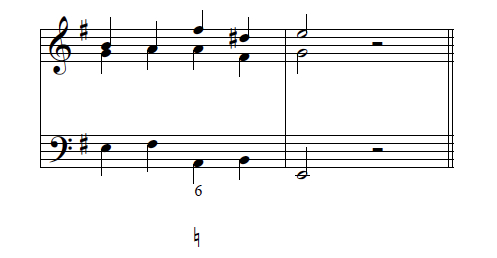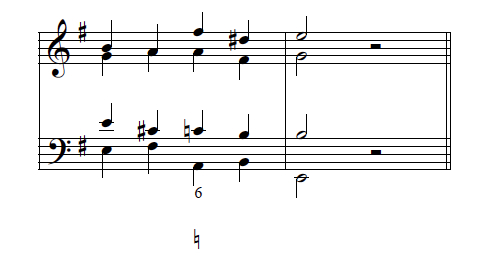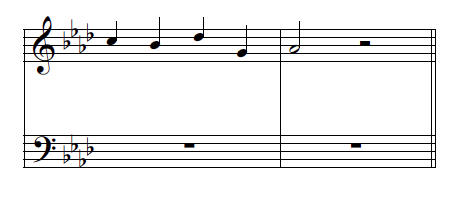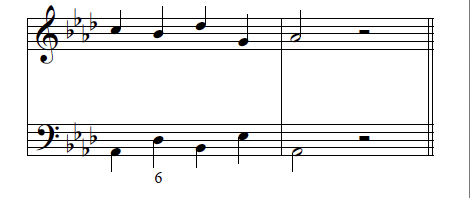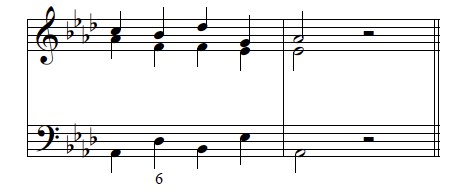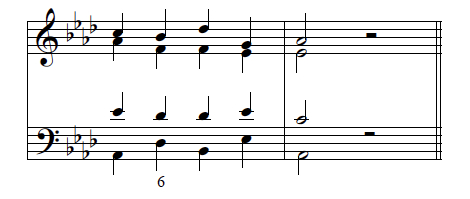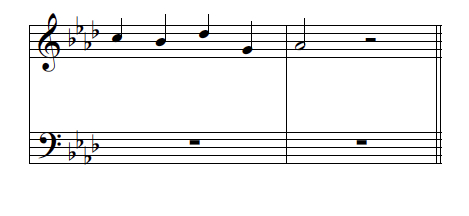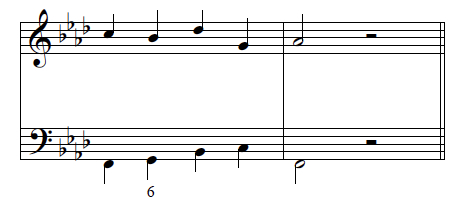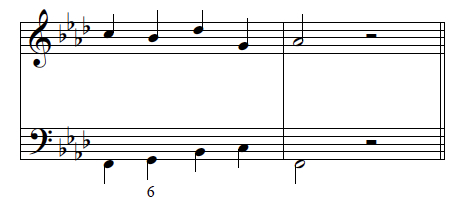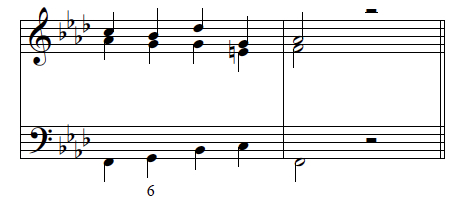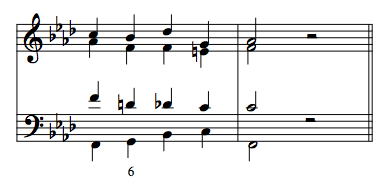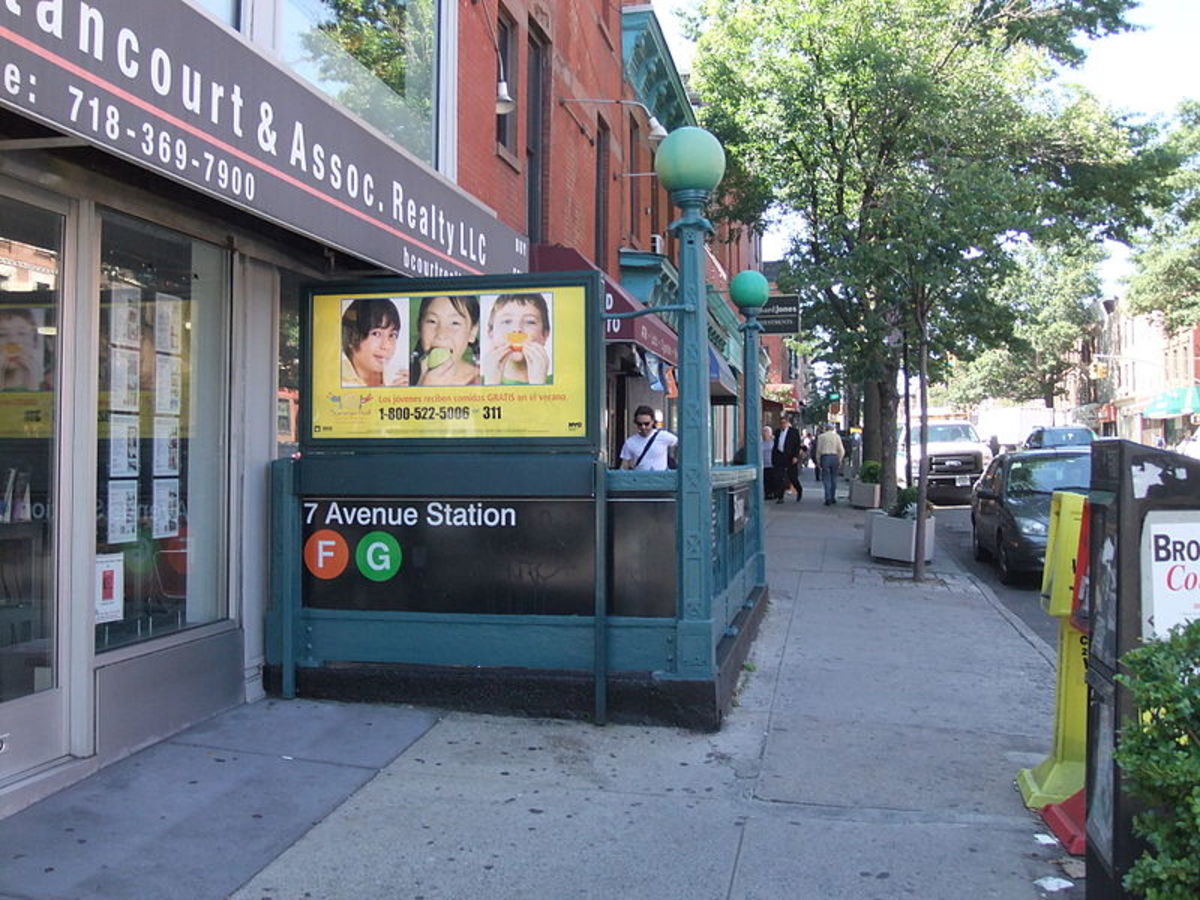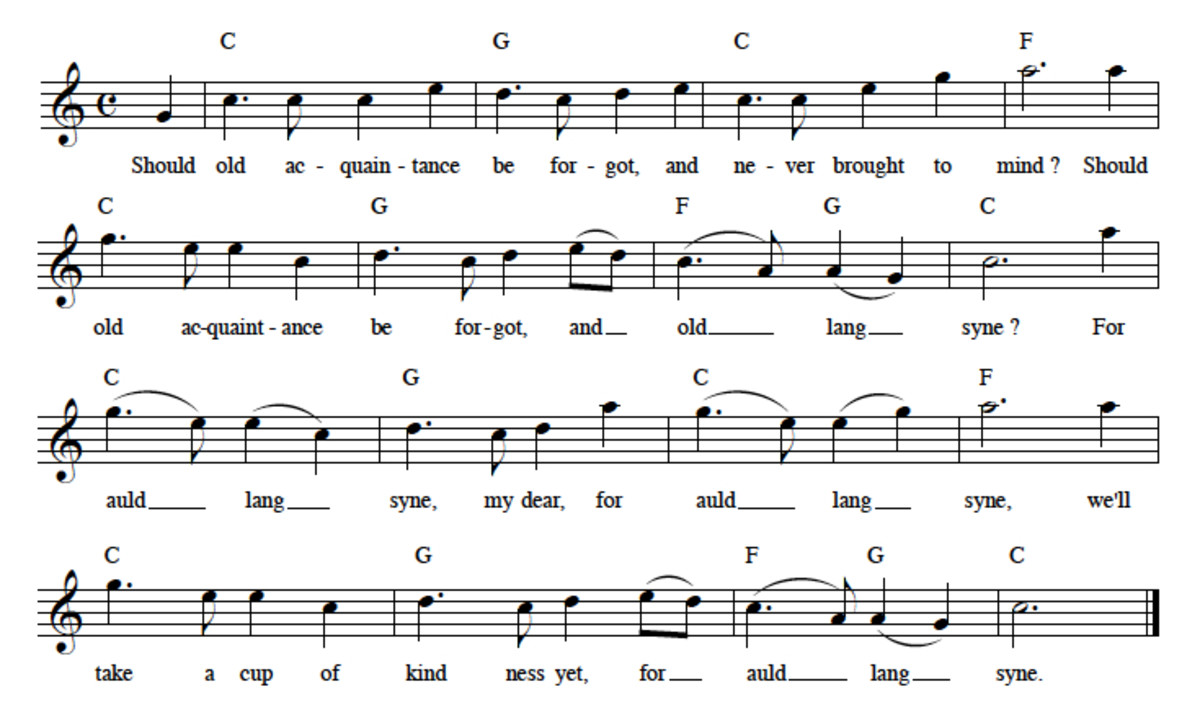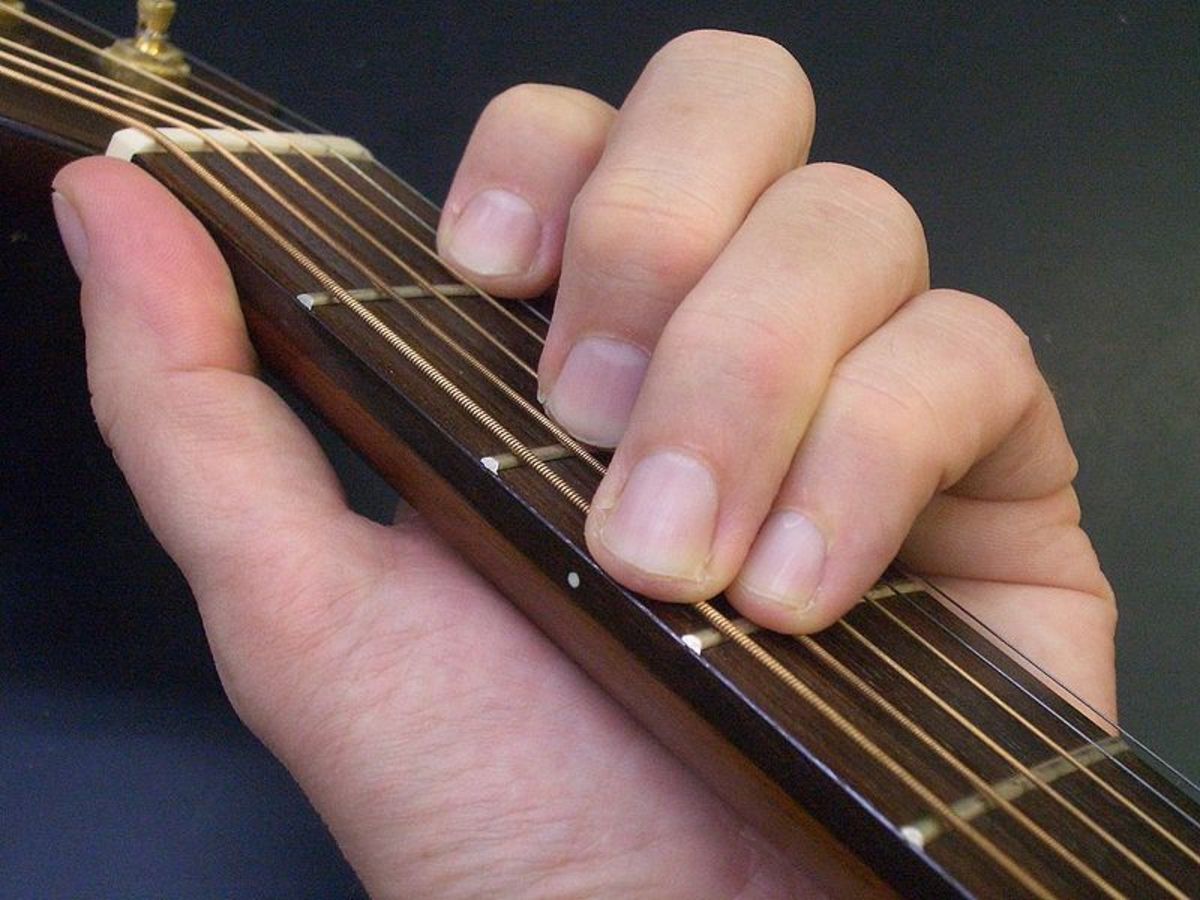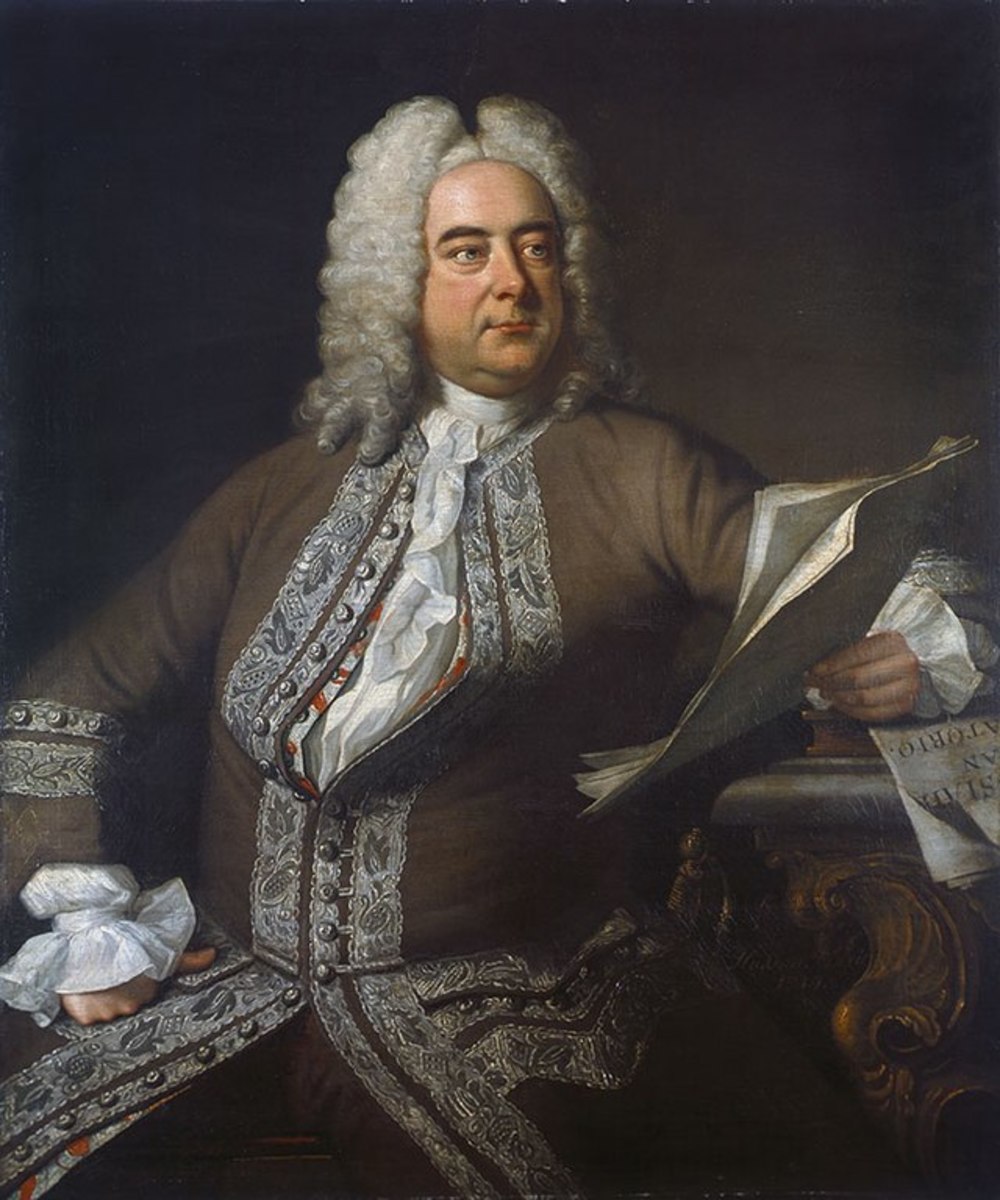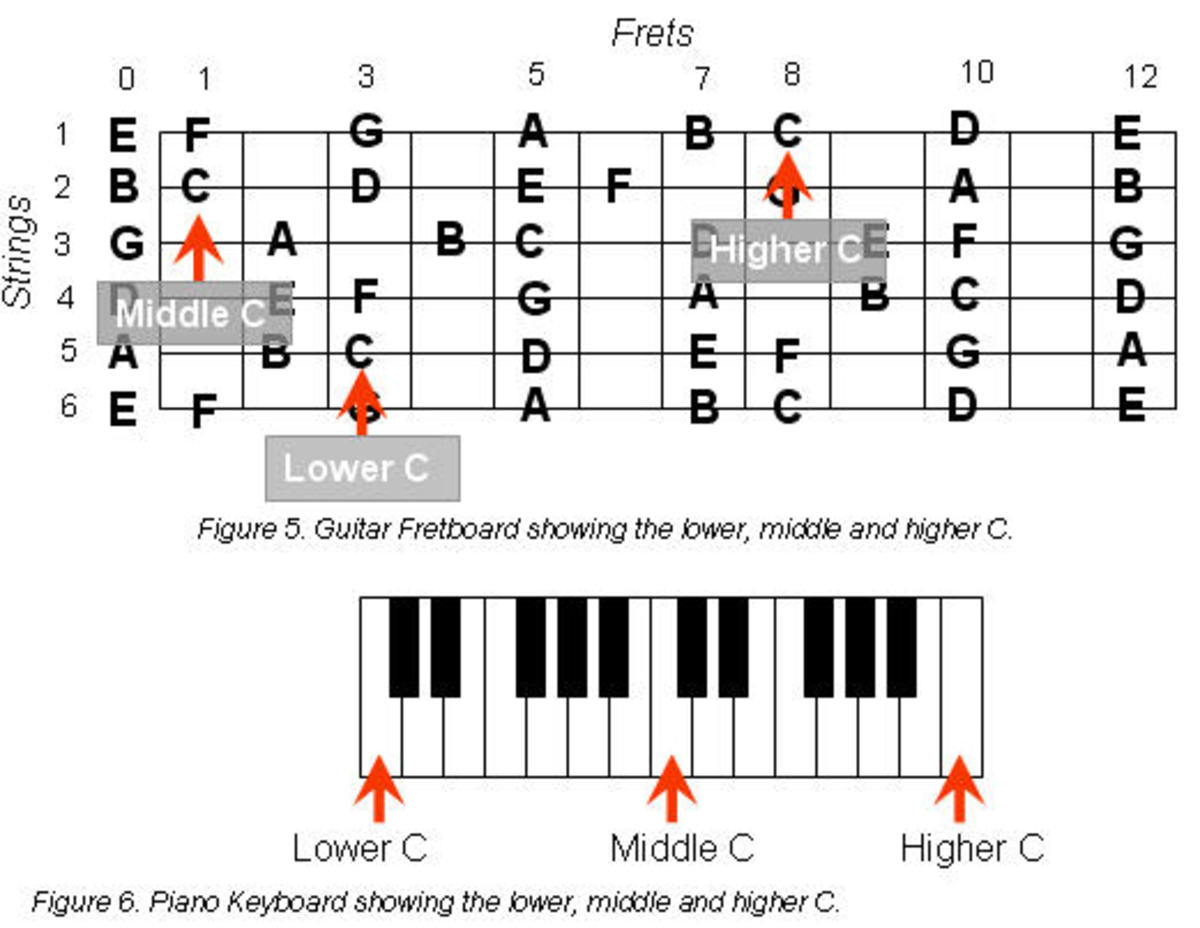Part-writing Inverted Chords: The Supertonic In First Inversion
This Hub--obviously, from the title--deals with part-writing, the discipline of harmonizing melodies in four part vocal style. It's part of a much bigger sequence of Hubs providing essential information and practice exercises in this discipline. (If you've been following the series all along, my apologies for restating what you know well already!)
If not, you'll probably want to check that this Hub is a good place for you to start. In the last Hub in this series, we introduced triad inversions, so if this is a new concept for you, and you haven't already worked through that Hub, you probably should do so.
Or, if you haven't done much part-writing before at all, you may want to go back even farther, to the previous Part-writing series, which explains--and, more importantly, provides practice exercises!--how to part-write in correct common-practice style using root position triads.
In the sidebar below you'll find links both to the previous Hub in this series, and to a summary Hub describing the content of each Hub in the first series.
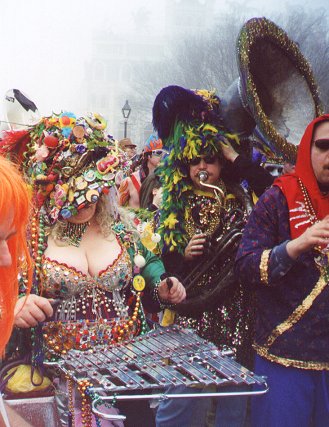
The previous Hub dealt with using inversions of primary triads--those triads built on scale degrees 1, 4, and 5, which are tonally the strongest scale degrees. (By the way, it's common to refer to these triads by the Roman numerals corresponding to those scale degree numbers: I, IV and V. We'll be using this system throughout these part-writing Hubs.)
As mentioned earlier, in this installment we'll be beginning an extended examination of the secondary triads, which comprise the triads ii, iii, vi and viio and some of their minor-key variants. As it happens, though, the supertonic triad is used very frequently indeed, which gives us a lot to discuss. Therefore, we'll devote this entire Hub to the supertonic, leaving the other secondary triads for later.
To put the secondary triads in their (major key) context, here they are as they appear in C Major:

- Part-writing Chords: Summary I
A 'syllabus' and summary for Doc Snow's innovative Hubs on the essential musical skill of part-writing. Sequence, content and links--plus a summary of part-writing 'rules.' - Part-writing Inverted Chords: Primary Triads In Fir...
How to use inverted triads in common-practice four-part writing. Learn to write tonic, dominant and subdominant in first inversion--these explanations, illustrations, and practice examples make it easy!
Below is a pretty typical example of a supertonic triad in first inversion in C major. (Example 2.)
Note the doubling of the bass, which is of course also the third of the triad. This is the typical doubling. Note the contrast with the doubling practice we saw in connection with I, IV and V--in the case of those triads, the third is rarely doubled. (The third is almost never doubled in the V chord, since particular third is also the leading tone of the key.)
Notice, too, that compared with subdominant (IV) chord, only one tone differs, the D in the soprano. We saw in earlier Hubs that subdominant and supertonic can substitute for one another--both chords lead one intuitively to expect a dominant chord. But when the supertonic is inverted and doubled as shown, the auditory similarity of the two chords becomes very marked.
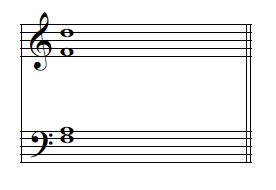
We saw long ago that one of the most frequent (dare I say, 'stereotypical?') chord progressions in common-practice style is I-IV-V. We noted that it has a characteristic built-in part-writing challenge, which follows from the fact that the IV-V progression has root motion by second--always posing heightened risk for the taboo parallel perfect unisons, fifths and octaves.
In Example 3, this risk is heightened by the fact that the soprano moves in parallel with the bass. (The safest way to avoid objectionable parallels in a IV-V progression is to have the upper three voice move contrary to the bass, but that is forestalled by the melodic shape.)
The parallels are between bass and tenor (fifths) and bass and alto (octaves). (Shown.)
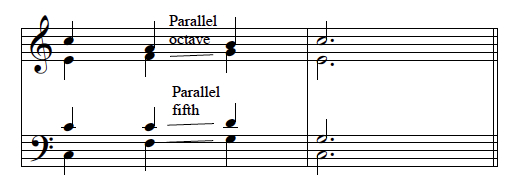
In Example 4, parallels are avoided by the expedient of doubling the third of the IV chord, allowing both alto and tenor to move contrary to the other two voices:
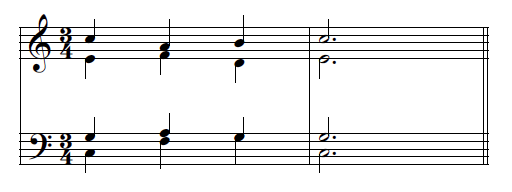
This is acceptible. But a doubled third in a primary triad, as we've said, is Doubling Option C: it is generally best to double the primary tones of the key (scale degrees 1, 4 and 5, with 2 as runner-up.)
In this case, the doubled third can be avoided:
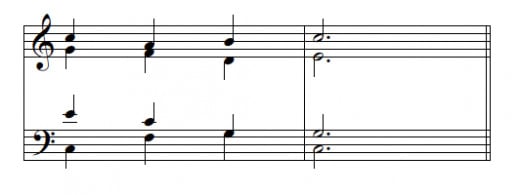
Here, the penalty is more leaping about in the tenor voice than perhaps we might like. Most troublesome, perhaps, is the skip of a third from E to C being followed in the same direction with the leap from C to G. In general, it's preferable to compensate for the extra 'melodic energy' of leaps (and even skips) by changing the melodic direction.
Some writers, though, feel that the issue is less troubling when the skip-and-leap motion outlines a triad, as it does here. Do you prefer one version--Example 4 versus Example 5--over the other?
At any rate, use of the supertonic in first inversion avoids the whole issue altogether. In the example below, only the tenor tone of the second chord differs from Example 5. But that change makes the connection to the V chord easier, since the tenor's D now forms a common tone which can smoothly link the two.
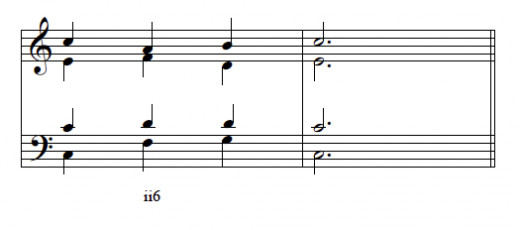
- Grand Staff Templates | Free Blank Sheet Music
Free blank grand staff templates in portrait and landscape orientation in PDF format.
Do you prefer this sound? Composers over the centuries presumably did, since they wrote it very often. Let's try applying this idea to a practice question. As always in these Hubs, I strongly recommend working each example on paper before clicking through the thumbnails to see the answers--it will really help the knowledge turn to skill for you. And as usual, I've given a link in the sidebar where you can download and print manuscript paper if you need to.
(By the way, the thumbnails present 'answers' voice by voice, normally in the order 'bass-alto-tenor.' But in reality, most people work more 'simultaneously, going back and forth between the voices and revising first ideas as needed.)
Start by identifying key and scale degrees of the soprano given below. Remember that we are now including both major and minor mode examples--but only one is a reasonable possibility here.
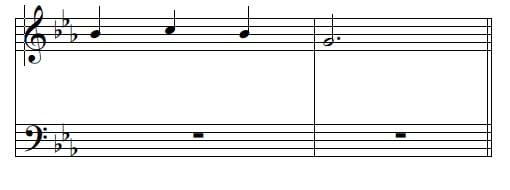
This is Eb major--C minor, the other choice fitting this key signature, would not normally feature repeated Bbs (as opposed to B naturals.) The scale degrees are 5-6-5-3. Add a bass fitting the I-ii6-V-I chord progression.


The bass might have been written an octave higher, but that is less characteristic, and would allow little space for the inner voices. Now add alto and tenor, beginning with a close position voicing.



VEx5
Let's try another one, using the same progression. Key and scale degrees?
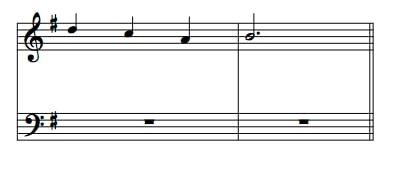
G major, with a 5-4-2-3 soprano line. Add a bass line that begins on the lower G and ends an octave higher.


With soprano and bass voices spread widely to begin with, this seems a good opportunity to use an open voicing. Doing so also allows room for the descending soprano. Add alto and tenor.



Here's another practice question:
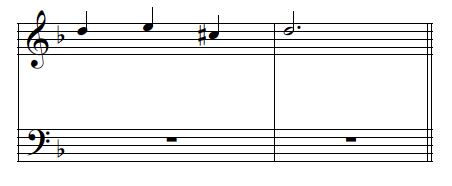
The C# is a giveaway that the key is not F, but D minor, since that tone would form the leading tone. Adding the bass line should be straight forward, but keep to the upper part of the bass range.


Great! But there's a question that arises at this point. In minor, the harmonic form of the scale normally acts as guide to the chord forms used when the alternate forms of scale degree six or scale degree seven affects a chord tone.
In the supertonic triad, scale degree six forms the fifth of the chord, so we have two possible forms, minor (raised sixth) and diminished (lowered sixth.)
When writing minor-mode supertonic triads in root position we were limited to the minor form, since diminished triads are normally only written only in first inversion. Since we are now using first inversion supertonic chords, though, the diminished form is now available to us, and we can follow the guidance of the harmonic minor.
Add alto and tenor, beginning with an open position chord.



Just for comparison's sake, here are variants using the lowered and raised forms of the sixth scale degree, forming minor and diminished supertonic triads, respectively.
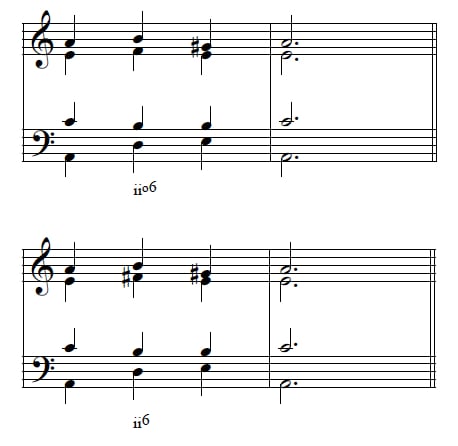
By the way, sometimes composers do write the minor supertonic simply because they want that particular harmonic color.
Let's try yet another practice question.
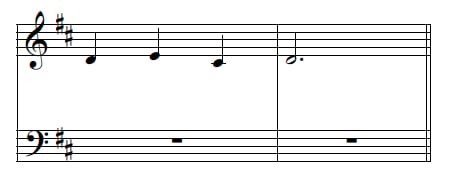
It's not quite so obvious, this time, whether we face minor or major mode. But if we want to use the same chord progression, only one of the two possibilities really fits. Add the appropriate bass line for that key.


It had to be B minor, because the F# on beat 3 would not fit with a V chord in the key of D. (All the other tones could have worked in either key.) Add alto and tenor.



Did you remember to add the sharp for the leading tone in the V chord? If not, self-administer thirty lashes with a wet noodle.
Here's another question; what is the key, and what are the scale degrees?
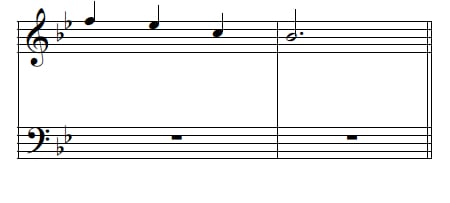
We must be in Bb, since the F natural would be uncharacteristic for G minor, and therefore the scale degrees are 5-4-2-1. Add the remaining parts.




The open voicing is natural for such widely spaced soprano and bass voices.
While the use of ii6 as a dominant preparation chord similar to IV is the most common usage, it is certainly also possible to use ii6 to create bass arpeggiations, as we did with the primary triads. See if you can figure out how to do that with this soprano:
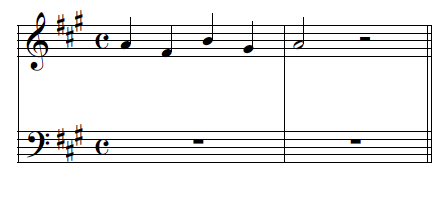
Let's assume this is major. Then, working by a process of elimination, we can assume that the first chord should be a tonic--since that's been the consistent practice within these Hubs--and that the last two chords would form a perfect cadence, V-I. That leaves only chords two and three to form the supertonic bass arpeggiation.
In principle, the arpeggiation could begin either with the inverted or the root position chord. But since our arpeggiation is beginning on a weak beat, we want to put the harmonically stronger root position triad on the strong beat--beat three. (This helps avoid, or at least minimize, any feeling of a false accent caused by the harmonies--or in other words, a syncopated harmonic rhythm.)
So our progression will be I-ii6-ii-V-I, as implied by the bass line below.
Complete the texture.



Here's a tricky one--as always, begin by identifying key and scale degrees.
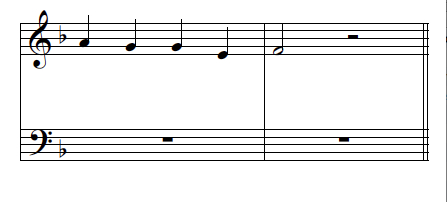
How can one tell if this is major or minor?
The short answer: one can't. It could equally well be harmonized either way. So let's begin by harmonizing it in F major. Add the appropriate bass, beginning in the lower octave and ending an octave higher; then complete the texture. (Close position voicings work well.)




Now try harmonizing the same melody in D minor. Add the bass.


Bearing in mind what we discussed a moment ago regarding root position supertonic triads--yes, that's a hint!--add alto and tenor voices.



Since the third beat has the supertonic in root position, we must use the minor (consonant) form, using the raised sixth scale degree. It is preferable to match this on beat two, even though the first inversion supertonic there would be acceptable in itself. If the root position triad were placed first, on the other hand, it would be effective and logical to use the lowered sixth on beat three. (The result would be a descending chromatic tenor line--B natural, B flat, A--which would be very strong.) We'll see an instance of this shortly.
In the meantime, here's another tricky line. Harmonizing it in roughly similar fashion to the preceding example poses challenges which bear on the question of which of the enharmonic forms of the sixth scale degree to use. Since this is minor, what are the scale degrees of the soprano line?
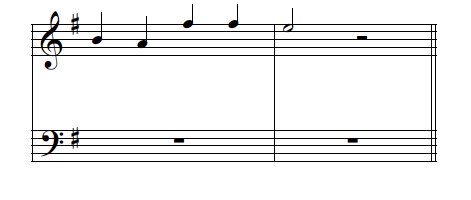
In E minor, this is a 5-4-2-2-1 line. Write a bass line in which the melody's upward sixth is mirrored by a downward sixth.


Add alto and tenor, beginning with a close position chord voicing.



Here once again the root position chord forces the raised sixth on beat two, in order to avoid writing a dissonant diminished triad.
Moreover, because the leading tone needs to be in the tenor on beat four, the tenor's beat three tone cannot be C natural--that would create the forbidden melodic interval of an augmented second. This situation illustrates a second reason why a minor-mode supertonic chord may feature the raised, rather than lowered sixth: the raised sixth is necessary when a particular part needs to follow a 6-7-1 line.
Musically, in this example there is no enharmonic change to overcome the syncopated harmonic rhythm. Only the simultaneous leaps in soprano and bass work to reinforce the accent that the third beat receives by virtue of its metric position. (Logically enough, theorists refer to this accent-by-position as a "metric accent.")
How does this question strike your musical ear?
If desired, there is certainly another option. If we change the melody as shown below, what does this allow us to do?
Harmonize in four parts to work out your answer to that question.




As shown, when the leading tone migrates to the soprano, the tenor is freed to follow the descending chromatic line we mentioned in the discussion of Question 8.
Let's conclude with a relatively easy question applying the concept of a supertonic in a bass arpeggiation pattern. Key and scale degrees?
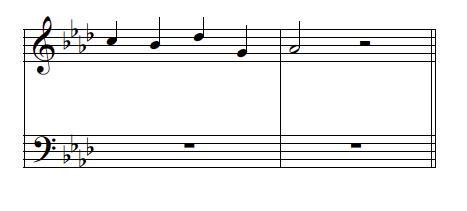
Once again, it's an ambiguous melody. Start (once again) by harmonizing it in major.




VEx16
The version with the root position supertonic second is preferred because in major this is the best option for harmonic flow and correct 'accentuation.'
Now try it in minor.


Here the sequence of first inversion and root position is reversed, as compared with Questions 9 and 10: we anticipate using the chromatic descending line.
Now add the inner voices.



Doc Snow on Wordpress.com!
- snowonmusic | A music theory blog that's NOT all work!
A music theory blog that's NOT all work! Ask questions, join (or start) a conversation on music--the choice is yours!
This borders on a cross relation: the D in the tenor is followed by Db in the soprano. But it is also in the tenor, helping smooth the potentially awkward sound.
And that is it: an introduction to inverted supertonic chords, and its utilization in a couple of common harmonic idioms. Next up: the remaining secondary triads, iii (III), vi (VI), and viio.
I hope you'll join me for that!
Other Musical Hubs by Doc Snow
- Understand Chords: Beyond Seventh Chords To Chord E...
Extended chords-ninths, elevenths, and thirteenths-are undoubtedly hipper than the average triad. But what are they, how do you use them, and, most of all, what do they actually *sound* like? The text and video of this guide to extended chord basics - Better Faster: Top Ten Music Practice Tips
Who wouldn't want to get better, faster? Some strategies. - String (or Restring) Your Guitar: How (Not) To Do I...
An illustrated guide to restringing an acoustic guitar. If you've been too intimidated to try this yourself, pluck up your courage and save yourself $15! - Strange Days Again: Remembrance And The Doors' Soph...
Music and memory intertwine: The Doors' most innovative album,

